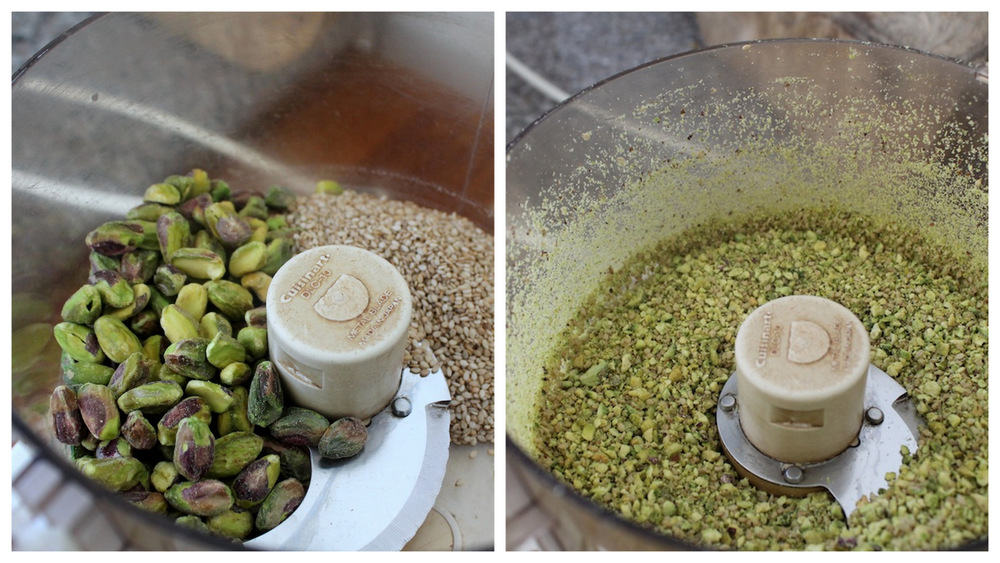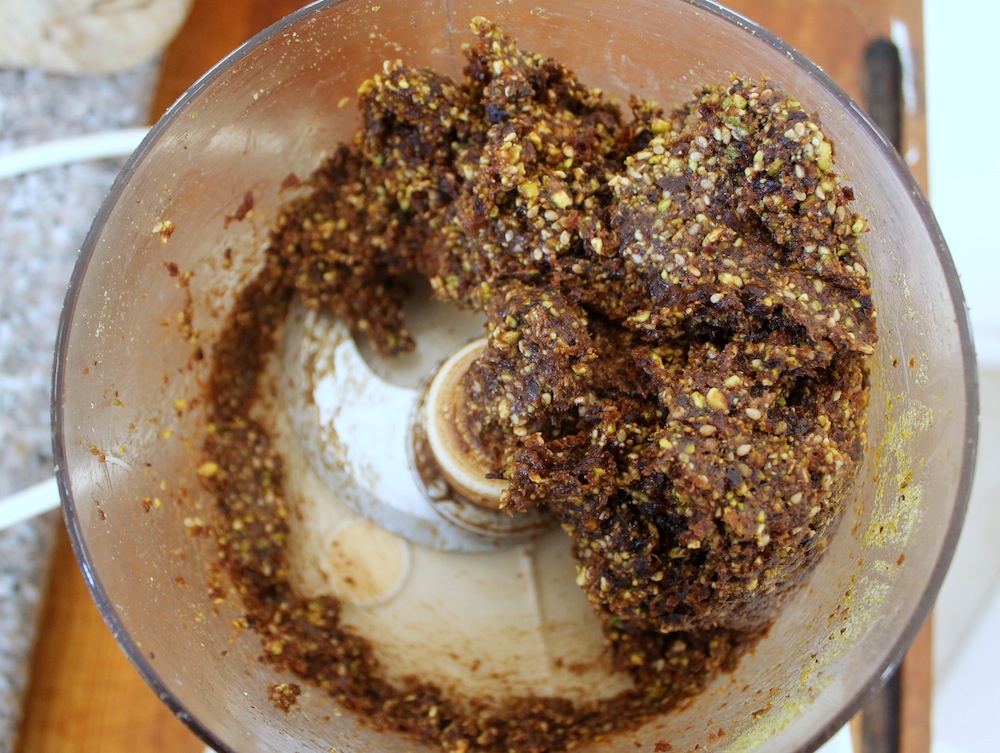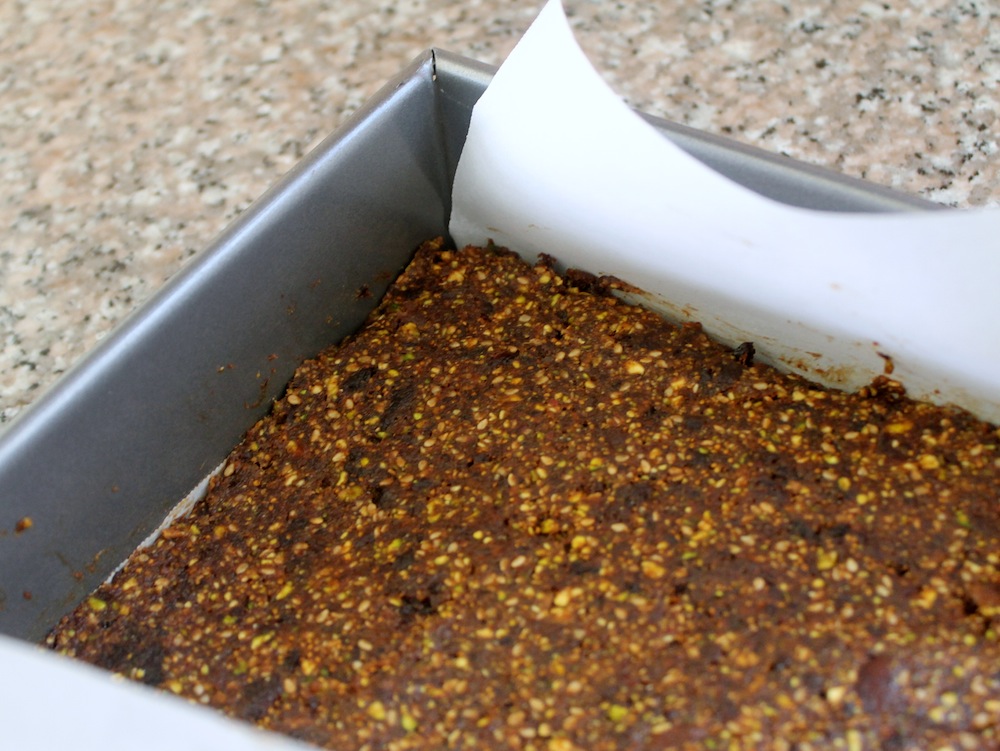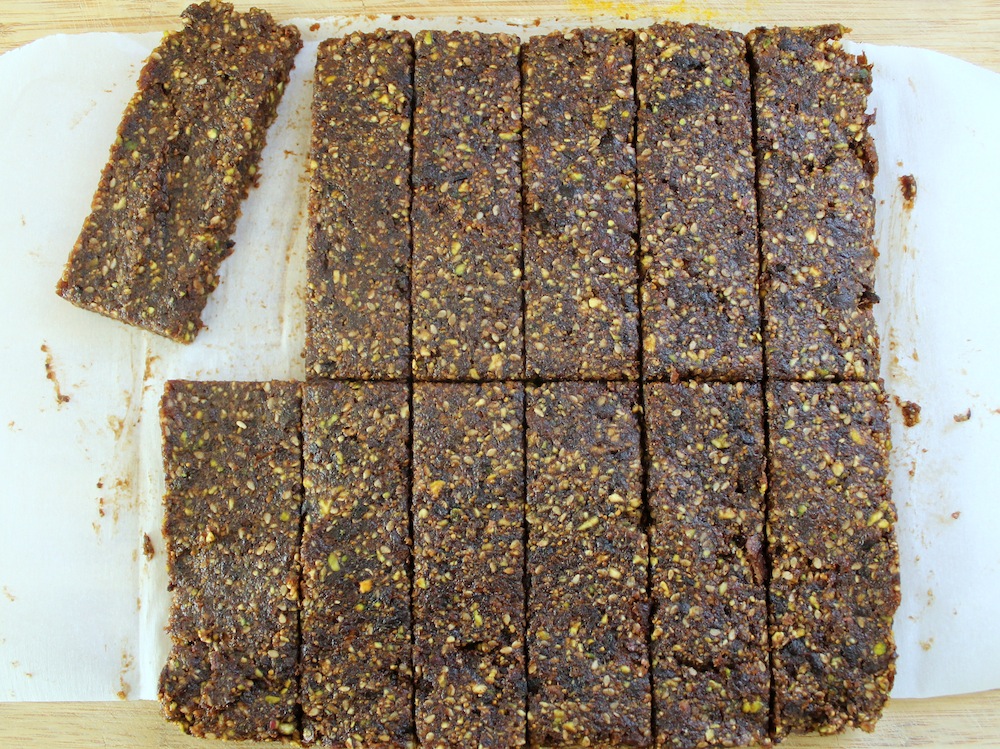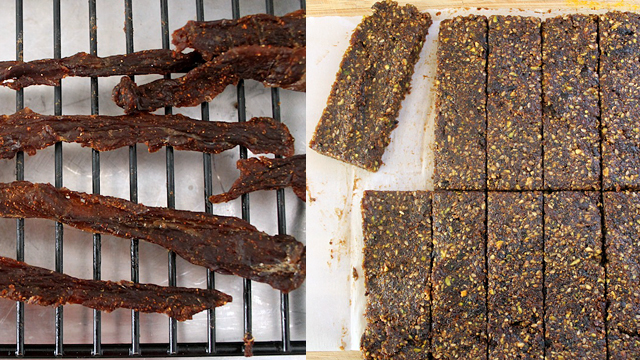
Despite the fact that it rarely feels like summer in July—thanks a lot, Karl the Fog—I try to make the most of the long days of summer. Day hikes and weekend camping trips are the perfect excuse to kiss the dreary grey away and experience summer like it was meant to be: hot and sunny. There are countless parks in which to camp and hike, but no matter where I choose to go, I make sure to pack quality snacks.
Buying snack bars and jerky is a quick solution, but I much prefer homemade versions. They’re easy to make, customizable, and far cheaper than anything you can find at REI. A mix of savory and sweet snacks is key for the most “balanced” bag of hiking treats, which is why I’ve made a batch each of smoky beef jerky and fig and pistachio “Lara Bars.” The beef jerky takes the most time to prepare, so we’ll start there.
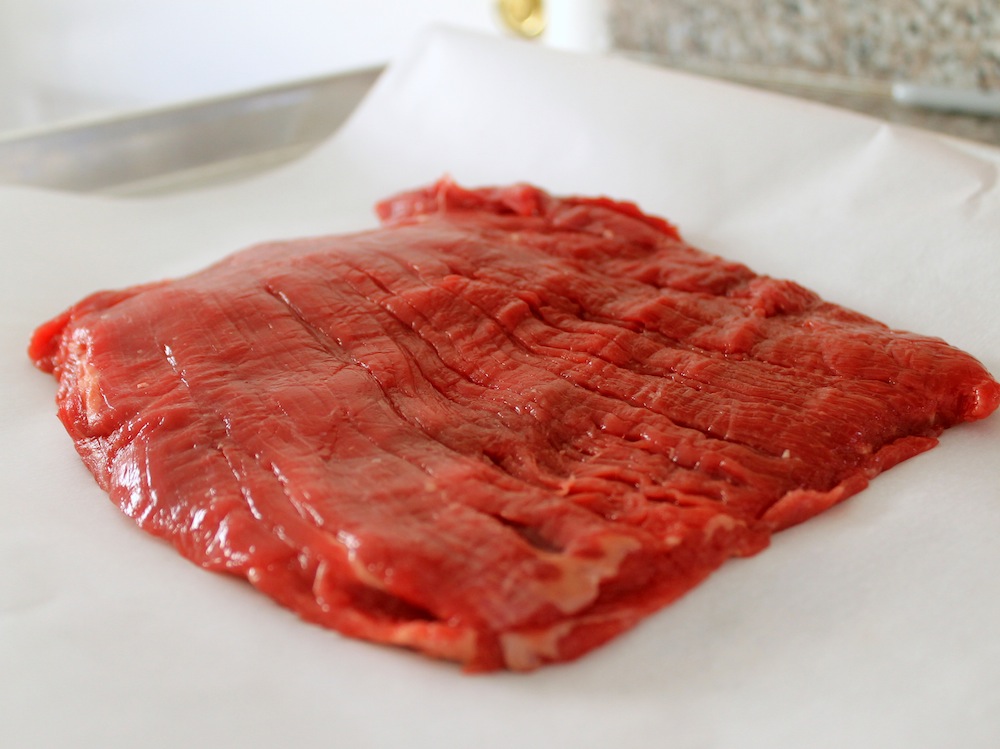
The biggest problem with store-bought beef jerky is the overload of salt and spices infused into the meat. Many varieties use MSG for a big jolt of flavor, but I think there is a better way to highlight the flavor of the beef: buy grass-fed. Yes, I know it is more expensive. However, grass-fed beef has a depth of flavor that really comes through in the final jerky, and it is well worth the extra couple of bucks per pound. I like to use flank steak, but you can use any lean cut of beef. Slice off any large pieces of fat on the surface of the steak. (The fat will go rancid faster than the meat, so I try to eliminate as much of it as possible.)
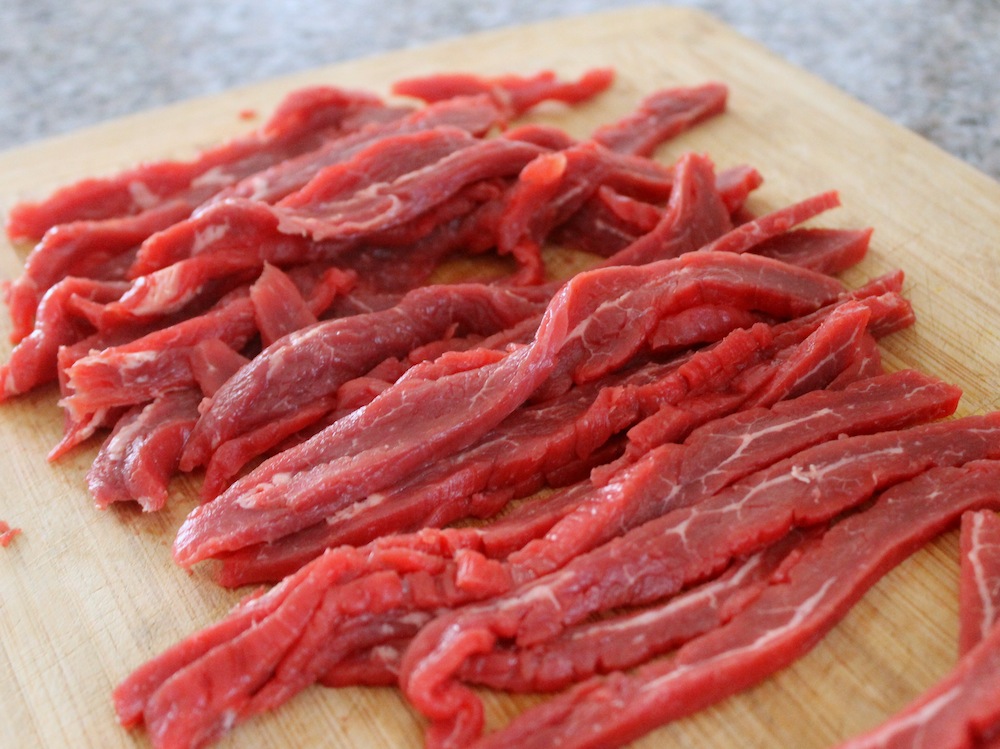
In order to slice the beef thinly, stick the meat in the freezer to firm up. But don’t freeze completely. Instead, pull it back out after about half and hour. Then use your sharpest knife to slice the steak into 1/4-inch thick slices across the grain. The grain is very easy to see on a flank steak; the “grain” refers to the long muscle fibers that run down the length of the steak.
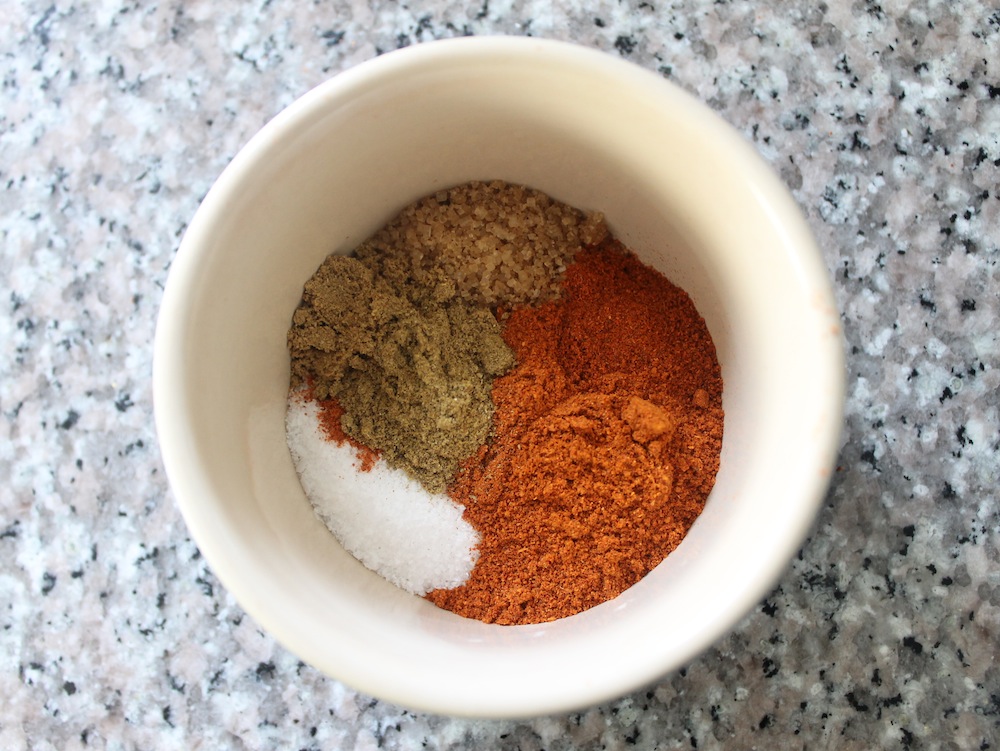
Once all of the steak is sliced, mix it with a spicy, smoky rub. Many jerky recipes use a wet marinade, but I prefer to keep the mix as dry as possible. After all, the steak will need to be dehydrated, and a wet marinade will just increase the necessary drying time. I like to use a mixture of kosher salt, Demerara (or brown) sugar, smoked paprika, chile powder, chipotle chile powder, cumin, and coriander. Each spice lends heat, smoke, and earthy flavor to the steak. Make sure to blend the dry rub thoroughly and evenly into the steak slices. Then cover the bowl and place it in the fridge to marinate overnight.
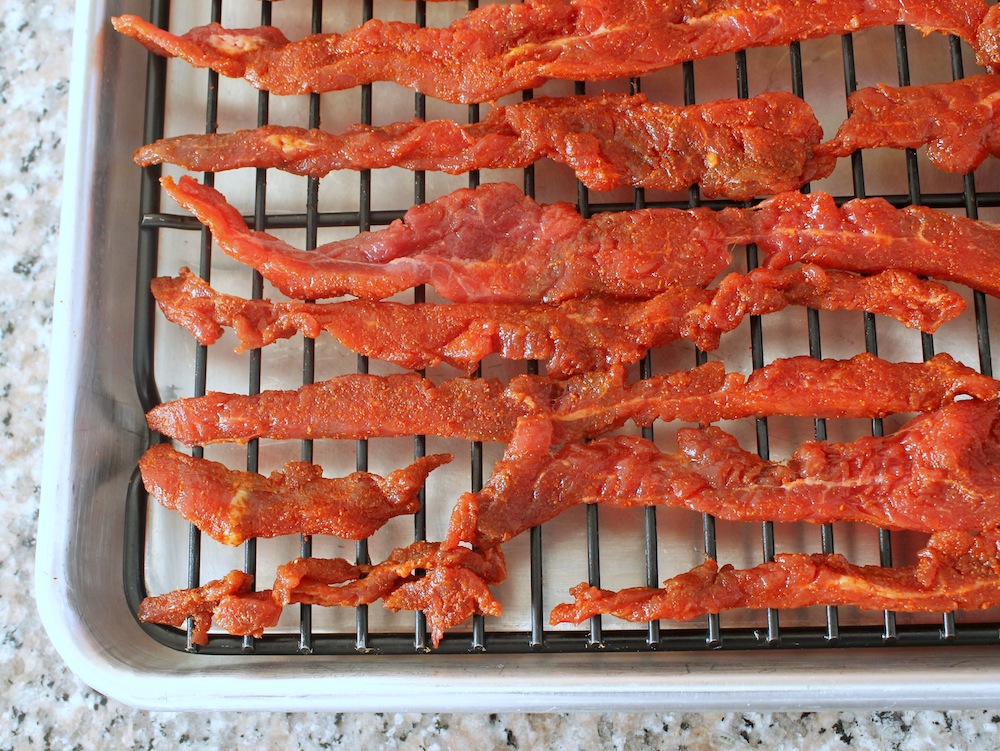
The next day, spread the steak slices across a cooling rack that is placed inside a rimmed baking sheet. The pieces can touch if they need to in order to fit on the rack. They shouldn’t, however, overlap. If you happen to own a dehydrator, you can use it to dry out the steak. I don’t own one, so I use my oven. My particular oven only gets down to about 200-225 degrees, which is about as high of a temperature as you’d want for any kind of dehydration process. To keep the temperature as low as possible and to keep the air circulating, prop open the oven door.
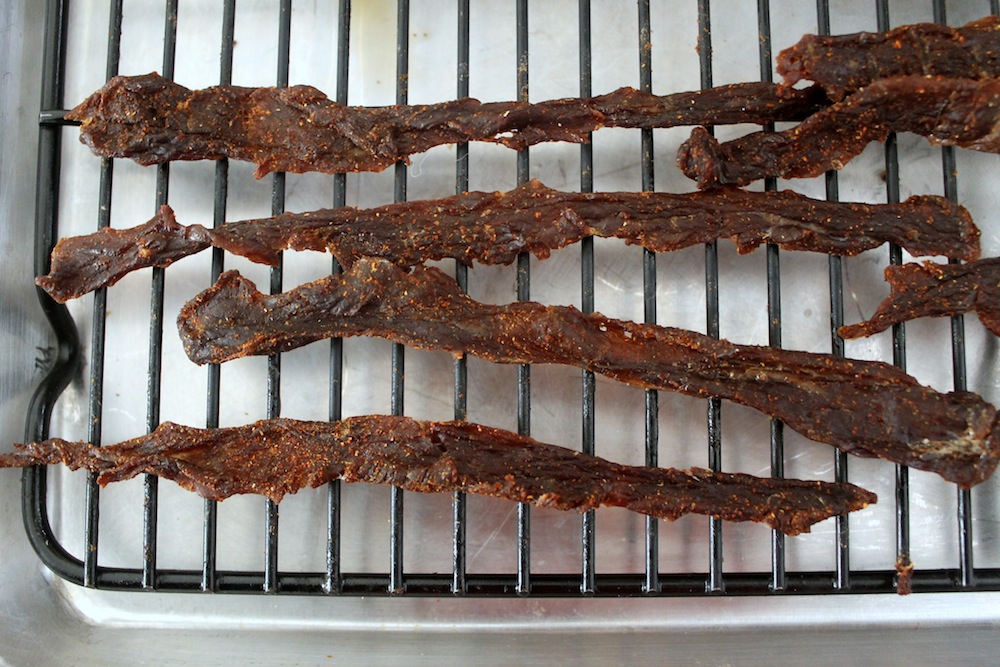
It will likely take at least 3 hours to turn the steak into jerky. After around 2 hours, begin to monitor the jerky, checking on it every 30 minutes. You’re looking for the slices of beef to turn dark brown and be firm and dry to the touch. Keep in mind, though, that the jerky should still be pliable and that it will continue to dry out after it comes out of the oven. Once the jerky is dried to your liking, remove the baking sheet from the oven and let the jerky cool to room temperature. Keep the jerky stored in an airtight ziplock container.
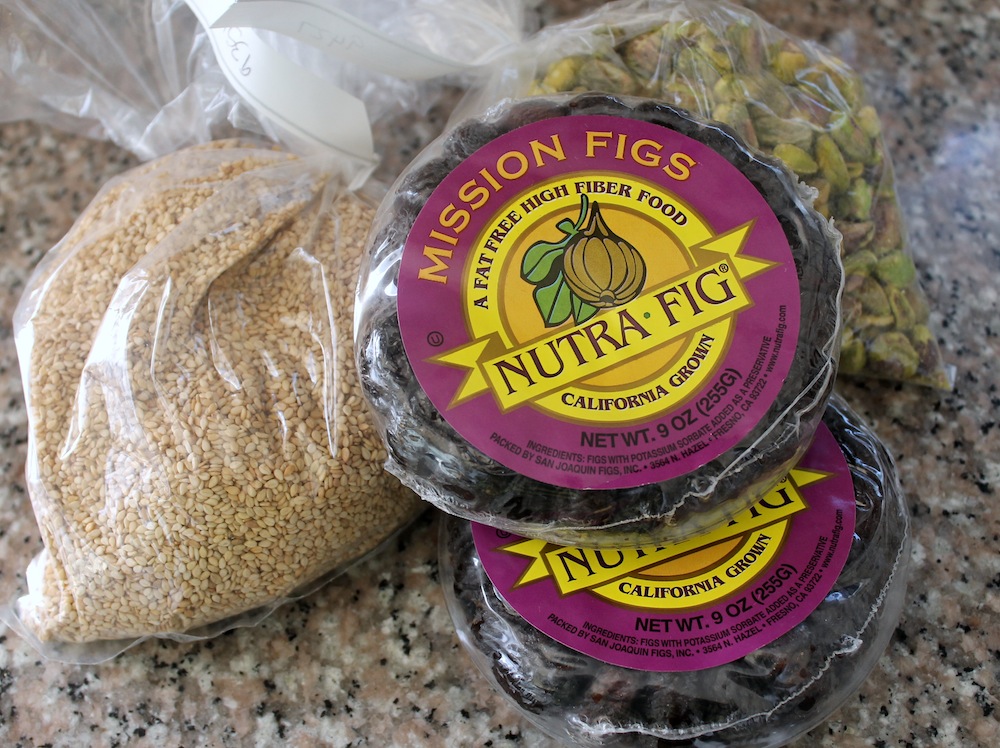
For a sweet component for camping trips, I can’t say no to those 3-4 ingredient Lara Bars. Making them at home wasn’t much of a stretch—they’re only dried fruit, nuts, and spices. And while the final result isn’t too much different than the store bought bars, they are far cheaper to make in bulk. Plus, the homemade version is infinitely customizable. Here, I’ve made fig and pistachio bars, but the sky’s the limit when it comes to your own version. Pick a favorite dried fruit and nut and go from there.
